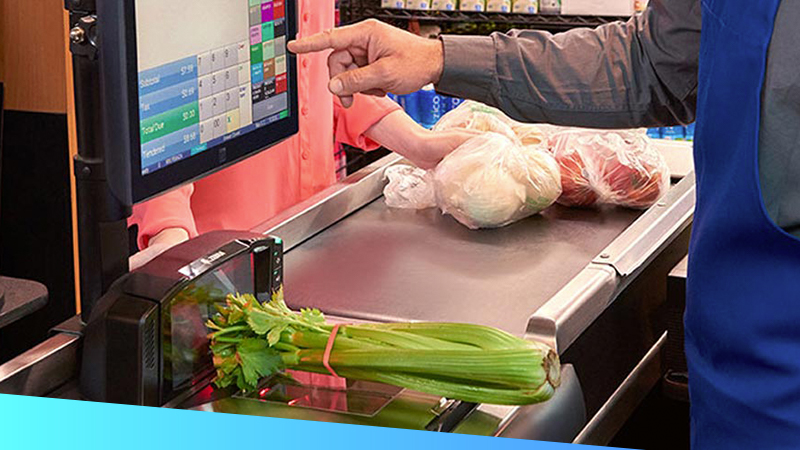Transform retail operations with Zebra’s retail technology solutions, featuring hardware and software for improving inventory management and empowering teams.
Streamline operations with Zebra’s healthcare technology solutions, featuring hardware and software to improve staff collaboration and optimise workflows.
Enhance processes with Zebra’s manufacturing technology solutions, featuring hardware and software for automation, data analysis, and factory connectivity.
Zebra’s transportation and logistics technology solutions feature hardware and software for enhancing route planning, visibility, and automating processes.
Zebra's hospitality technology solutions equip your hotel and restaurant staff to deliver superior customer and guest service through inventory tracking and more.
Zebra's market-leading solutions and products improve customer satisfaction with a lower cost per interaction by keeping service representatives connected with colleagues, customers, management and the tools they use to satisfy customers across the supply chain.
Empower your field workers with purpose-driven mobile technology solutions to help them capture and share critical data in any environment.
Zebra's range of mobile computers equip your workforce with the devices they need from handhelds and tablets to wearables and vehicle-mounted computers.
Zebra's desktop, mobile, industrial, and portable printers for barcode labels, receipts, RFID tags and cards give you smarter ways to track and manage assets.
Zebra's 1D and 2D corded and cordless barcode scanners anticipate any scanning challenge in a variety of environments, whether retail, healthcare, T&L or manufacturing.
Zebra's extensive range of RAIN RFID readers, antennas, and printers give you consistent and accurate tracking.
Choose Zebra's reliable barcode, RFID and card supplies carefully selected to ensure high performance, print quality, durability and readability.
Zebra's rugged tablets and 2-in-1 laptops are thin and lightweight, yet rugged to work wherever you do on familiar and easy-to-use Windows or Android OS.
With Zebra's family of fixed industrial scanners and machine vision technologies, you can tailor your solutions to your environment and applications.
Zebra’s line of kiosks can meet any self-service or digital signage need, from checking prices and stock on an in-aisle store kiosk to fully-featured kiosks that can be deployed on the wall, counter, desktop or floor in a retail store, hotel, airport check-in gate, physician’s office, local government office and more.
Discover Zebra’s range of accessories from chargers, communication cables to cases to help you customise your mobile device for optimal efficiency.
Zebra's environmental sensors monitor temperature-sensitive products, offering data insights on environmental conditions across industry applications.
Zebra's location technologies provide real-time tracking for your organisation to better manage and optimise your critical assets and create more efficient workflows.
Enhance frontline operations with Zebra’s AI software solutions, which optimize workflows, streamline processes, and simplify tasks for improved business outcomes.
Empower your frontline with Zebra Companion AI, offering instant, tailored insights and support to streamline operations and enhance productivity.
The everything you need to rapidly and cost effectively develop high-performance AI vision applications on Zebra mobile computers.
Zebra Workcloud, enterprise software solutions boost efficiency, cut costs, improve inventory management, simplify communication and optimize resources.
Keep labour costs low, your talent happy and your organisation compliant. Create an agile operation that can navigate unexpected schedule changes and customer demand to drive sales, satisfy customers and improve your bottom line.
Drive successful enterprise collaboration with prioritized task notifications and improved communication capabilities for easier team collaboration.
Get full visibility of your inventory and automatically pinpoint leaks across all channels.
Reduce uncertainty when you anticipate market volatility. Predict, plan and stay agile to align inventory with shifting demand.
Drive down costs while driving up employee, security, and network performance with software designed to enhance Zebra's wireless infrastructure and mobile solutions.
Explore Zebra’s printer software to integrate, manage and monitor printers easily, maximising IT resources and minimising down time.
Make the most of every stage of your scanning journey from deployment to optimisation. Zebra's barcode scanner software lets you keep devices current and adapt them to your business needs for a stronger ROI across the full lifecycle.
RFID development, demonstration and production software and utilities help you build and manage your RFID deployments more efficiently.
RFID development, demonstration and production software and utilities help you build and manage your RFID deployments more efficiently.
Zebra DNA is the industry’s broadest suite of enterprise software that delivers an ideal experience for all during the entire lifetime of every Zebra device.
Advance your digital transformation and execute your strategic plans with the help of the right location and tracking technology.
The Zebra Aurora suite of machine vision software enables users to solve their track-and-trace, vision inspection and industrial automation needs.
Zebra Aurora Focus brings a new level of simplicity to controlling enterprise-wide manufacturing and logistics automation solutions. With this powerful interface, it’s easy to set up, deploy and run Zebra’s Fixed Industrial Scanners and Machine Vision Smart Cameras, eliminating the need for different tools and reducing training and deployment time.
Aurora Imaging Library™, formerly Matrox Imaging Library, machine-vision software development kit (SDK) has a deep collection of tools for image capture, processing, analysis, annotation, display, and archiving. Code-level customisation starts here.
Aurora Design Assistant™, formerly Matrox Design Assistant, integrated development environment (IDE) is a flowchart-based platform for building machine vision applications, with templates to speed up development and bring solutions online quicker.
Designed for experienced programmers proficient in vision applications, Aurora Vision Library provides the same sophisticated functionality as our Aurora Vision Studio software but presented in programming language.
Aurora Vision Studio, an image processing software for machine & computer vision engineers, allows quick creation, integration & monitoring of powerful OEM vision applications.
Adding innovative tech is critical to your success, but it can be complex and disruptive. Professional Services help you accelerate adoption, and maximise productivity without affecting your workflows, business processes and finances.
Zebra's Managed Service delivers worry-free device management to ensure ultimate uptime for your Zebra Mobile Computers and Printers via dedicated experts.
Find ways you can contact Zebra Technologies’ Support, including Email and Chat, ask a technical question or initiate a Repair Request.
Zebra's Circular Economy Program helps you manage today’s challenges and plan for tomorrow with smart solutions that are good for your budget and the environment.

The State of Retail and POS Systems
According to the U.S. Department of Commerce, total 2018 retail sales eclipsed $6 trillion in 2018, up 5% over 2017 and up by 50% off the 2009 record low of $4.1 trillion. The retail sector overall is transitioning through two well-documented trends – one relating to technology and the impact of e-commerce and the other pertaining to shifts in consumer buying habits and preferences. Retailers that fail to embrace these shifts will suffer and may find their names added to the growing list of retail bankruptcies. Conversely, those that embrace these trends will help redefine retail for the coming generation.
One of the greatest misconceptions in retail today is the share of total retail expenditures. While retail sales through e-commerce channels represent by far the fastest growing retail channel in the U.S, by the end of 2018, e-commerce sales remained under 10% of total retail revenues (at $514 billion, e-commerce represented 9.8% of total retail spend in 2018 according to the Department of Commerce). The physical retail store, with its close proximity to shoppers and the ability for retailers to engage directly with customers, represents a strategic asset if leveraged appropriately.
As retailers learn how best to synchronize their physical and digital estates and tackle issues such as channel balancing and profit margin optimization by fulfillment channel, one key takeaway from the research VDC has conducted into retail is the need for retailers to modernize their infrastructure to better adapt to the shifts in retail. We are witnessing these “in-store” investments address everything from store associate customer engagement and expanding purchase fulfillment options to updating point of sale (POS) infrastructure. In fact, according to a recent survey among retail technology decision makers, “optimizing stores” was cited as the most significant hurdle facing retailers over the next 12-24 months.
Scanning at the Point of Sale
2018 was a strong year for retail technology spend as retailers leveraged increased access to capital to address many of their modernization initiatives. At the point of sale – one of the key points of “friction” for today’s shoppers – updating POS infrastructure was a common theme, including the adoption of more modern scanning solutions. From a scanning technology perspective, this means migration from legacy laser scanners to camera-based imagers across all form factors including presentation scanners to more sophisticated bioptic scanners used in high-volume transaction environments like grocery. Among the key factors driving this transition are:
- Camera-based 2D-scanners that can pick up codes on mobile phones and store cards, enabling retailers to integrate online and loyalty campaigns and coupons with in-store shopping. For grocers, this improves accuracy and reduces POS loss and improves overall shopper satisfaction.
- Camera-based 2D-scanners that are capable of capturing more than just common codes. They read watermark labels such as Digimarc, images of bank checks and drivers licenses, facilitating ever-expanding customer requirements while reducing exception-based bottlenecks at checkout.
Although several Tier I retailers are on their second or third generation camera-based scanners at the POS, when considering the overall retail landscape, this transition is still in its early stages. Today, VDC estimates that laser or linear imaging technology representing an estimated two in three POS scanners. By 2022, we anticipate over 50% of POS scanners will have migrated to 2D-capable solutions, suggesting a continued upgrade wave.
Zebra Technologies Riding the POS Scanner Upgrade Wave
Zebra Technologies is – relatively speaking – a newcomer to the bioptic scanner market. However, taking advantage of the entry provided by the scanning technology transition/upgrade cycle and leveraging its already strong footprint in the retail sector, Zebra’s bioptic scanning business has outpaced the overall market in 2018. In VDC’s most recent Global POS Scanner Market Report, VDC estimated that shipments of 2D/camera-based bioptic scanners would grow by 19.5% in 2018. Zebra significantly outpaced that growth estimate – albeit from a smaller base – with bioptic revenues growing by over 60% in 2018. Moving forward, Zebra appears well-positioned to continue to support retailer’s POS scanning modernization efforts.
Editor’s Note: You can learn more about our bioptic scanners here, including the next generation Zebra MP7000 multi-plane 1D/2D image grocery scanner scale.

David Krebs
David Krebs has more than ten years experience covering the markets for enterprise and government mobility solutions, wireless data communication technologies and automatic data-capture research and consulting. Mr. Krebs focuses on identifying the key drivers and enablers in the adoption of mobile and wireless solutions among mobile workers in the extended enterprise.
Mr. Kreb’s consulting and strategic advisory experience is far reaching and includes technology and market opportunity assessments, technology penetration and adoption enablers, partner profiling and development, new product development and M&A due diligence support. He has extensive primary market research management and execution experience to support market sizing and forecasting, total cost of ownership (TCO), comparative product performance evaluation, competitive benchmarking and end user requirements analysis.
Mr. Krebs is a graduate of Boston University (BSBA).
Zebra Developer Blog
Zebra Developer BlogZebra Developer Blog
Are you a Zebra Developer? Find more technical discussions on our Developer Portal blog.
Zebra Story Hub
Zebra Story HubZebra Story Hub
Looking for more expert insights? Visit the Zebra Story Hub for more interviews, news, and industry trend analysis.
Search the Blog
Search the BlogSearch the Blog
Use the below link to search all of our blog posts.
Most Recent
Legal Terms of Use Privacy Policy Supply Chain Transparency
ZEBRA and the stylized Zebra head are trademarks of Zebra Technologies Corp., registered in many jurisdictions worldwide. All other trademarks are the property of their respective owners. Note: Some content or images on zebra.com may have been generated in whole or in part by AI. ©2025 Zebra Technologies Corp. and/or its affiliates.




